In the bustling world of e-commerce and supply chain management, the small details can often have the biggest impact. One such detail that plays a critical role in ensuring a smooth transaction and delivery is the packing slip. While it might seem like just a piece of paper, a packing slip serves as a vital communication tool between a seller, a buyer, and any logistics providers involved in the delivery process.
This document, which typically accompanies a shipped package, lists the contents within and offers an important point of reference for inventory management and order verification. Throughout this article, we will delve deeper into the importance of packing slips, how they are used effectively, and why they are an indispensable part of the logistics puzzle.
Table of Contents
What is a packing slip?

A packing slip, also known as a packing list or shipping list, is an important document included in a shipment of goods. It provides detailed information about the contents of a package, typically listing items, quantities, descriptions, and sometimes, item weights and measurements. Unlike an invoice, a packing slip does not include financial information like pricing or payment terms.
Its primary function is to inform all parties involved—sellers, buyers, and shipping carriers—about what is in the shipment. This helps facilitate correct delivery, assists with inventory management, and acts as a verification tool to ensure that the correct items and quantities have been sent and received.
Packing Slip Templates
Packing Slip Templates are important tools in the world of commerce, assisting businesses in creating detailed lists of items included in a particular shipment. These templates provide a uniform structure to itemize products, improving clarity and efficiency in shipping and receiving processes.
In a standard template, key sections usually include fields for the sender’s and receiver’s information, shipment date, and a detailed list of the shipped items. This list often consists of item descriptions, quantities, and sometimes weight or dimensions. Some templates might also include additional information such as tracking numbers or special instructions for the delivery.
Packing Slip Templates are widely used across industries. Retailers, manufacturers, and ecommerce businesses all benefit from using these templates in their shipping operations. They ensure that the receiving party knows exactly what to expect in the shipment, making the process of inventory management smoother and more accurate.
Why you need packing slip?
While a packing slip may initially seem like just another piece of paper, its significance in e-commerce and supply chain management is immense. Below we detail several key reasons why packing slips are crucial for your business operations.
1. Verification of Shipment Contents
A packing slip acts as an official record of what items and quantities were shipped. Upon receiving the package, the customer can check the slip against the actual contents to ensure everything ordered has been included. For businesses, it aids in verifying that the correct products and quantities were sent out, minimizing the chance of errors.
2. Assisting in Inventory Management
Packing slips play a vital role in inventory management. They help keep track of what items are going out and consequently, what stock levels remain. By comparing packing slips with order records, businesses can accurately monitor and control inventory, prevent stock-outs or overstocks, and plan for future needs.
3. Facilitating Smooth Customs Processes
For international shipments, a packing slip is especially important. It provides customs officers with a clear understanding of the package contents, allowing for easier processing and quicker clearance at customs. This can significantly speed up delivery times and ensure a smoother transaction for both seller and buyer.
4. Providing a Better Customer Experience
Customers appreciate transparency. A packing slip gives them the ability to quickly and easily see what should be in the package. This is particularly beneficial when customers are receiving multiple shipments or when the shipment includes a large number of items. It simplifies the process for the customer, increasing satisfaction and potentially leading to repeat business.
5. Handling Returns and Exchanges
In the event of a return or exchange, a packing slip can be a handy reference. It allows both the business and customer to see what was originally sent, making it easier to handle any return or exchange processes.
6. Backup for Lost Invoices
While packing slips and invoices serve different purposes, a packing slip can provide critical information if an invoice is lost. While it doesn’t contain pricing information, it does detail the items and quantities sent, which can be useful for reconciling orders.
What Information is Found on a Packing Slip?
A packing slip serves as a comprehensive guide to what’s inside a shipment, and while its contents may vary based on the company or the nature of the goods, several key elements are typically included. Here’s a detailed rundown of the information found on a packing slip:
1. Sender’s Information
This includes the name and contact details of the sender or the company dispatching the goods. It’s usually accompanied by a return address in case the package needs to be sent back.
2. Recipient’s Information
The recipient’s name, contact information, and delivery address are crucial components of a packing slip. These details ensure the package arrives at the correct destination.
3. Date
This is the date when the goods were packed or the package was shipped. This information can be crucial for tracking deliveries or managing inventory.
4. Order Number
The order number, often linked to an invoice or a purchase order, is used to connect the shipment to a specific customer order. It helps streamline order tracking and customer service interactions.
5. Itemized List of Goods
This is the most crucial part of a packing slip. It contains a list of all the items included in the shipment, typically featuring product names, descriptions, SKU or item codes, and the quantities of each item. Sometimes, for easier identification, it may also include item images, weights, and dimensions.
6. Shipping Method
The shipping method provides information about how the package is being delivered (e.g., ground, overnight, two-day shipping), which can be helpful for customers anticipating the arrival of their goods.
7. Special Instructions
If there are any specific instructions related to the order—for instance, if the items are fragile and need to be handled with care—these will be listed here.
8. Box Count
For shipments that include multiple boxes, a packing slip will often indicate which box number the slip belongs to (e.g., “Box 1 of 3”) and sometimes an overview of which items are in each box.
9. Terms and Conditions
While not always included, some packing slips may contain information regarding the company’s return policy, exchange policy, or other relevant terms and conditions.
Packing Slip vs. Shipping Label vs. Bill of Lading vs. Invoice
When dealing with the shipment of goods, there are several critical documents involved, each serving its unique function in the supply chain. Here, we’ll break down the differences and the roles of four key documents: Packing Slip, Shipping Label, Bill of Lading, and Invoice.
1. Packing Slip
A packing slip, also known as a packing list, is included in the shipment of goods. It details the specific items and quantities within the package, but typically does not include financial information. Here are some of its key features:
- Used as a reference for package contents, helpful in inventory management and order verification.
- Critical in the returns process, as it helps identify what items were originally sent.
- Assists customers in verifying they’ve received all the items they’ve ordered.
- Essential for international shipments as it assists in the customs clearance process.
2. Shipping Label
The shipping label is a sticker placed on the outside of a package, providing critical information necessary for the shipment to reach its intended destination. Its key elements include:
- Sender and recipient’s names, addresses, and contact information.
- Barcode or QR code for tracking the shipment’s progress.
- Shipping method and any special handling instructions.
- Details about the package like weight and dimensions, which are essential for carriers to handle the package correctly.
3. Bill of Lading (BOL)
The Bill of Lading is a legal document between the shipper and the carrier that details the type, quantity, and destination of the goods being carried. It also serves as a shipment receipt when the carrier delivers the goods at the predetermined destination. Its key aspects are:
- Evidence of a contract between the carrier and the shipper.
- Includes detailed information about the goods, shipper, consignee, and the agreed transportation mode and route.
- Serves as a document of title to the goods – in some instances, possession of the BOL grants ownership of the goods.
- Critical in filing claims for damage during transit as it confirms the goods were in good condition when handed over to the carrier.
4. Invoice
The invoice is a financial document issued by the seller to the buyer, providing details about the goods or services sold, their prices, discounts, taxes, and total amount due. It’s not typically included in the shipped package but sent separately to the buyer. Its key features are:
- Provides a detailed account of goods or services provided, enabling the buyer to know what they’re paying for.
- Specifies the payment terms, including the due date and acceptable payment methods.
- Legally enforceable document that helps sellers get paid on time and maintain accurate financial records.
- Essential for the buyer’s accounting and tax records, as it serves as proof of expense.
In conclusion, while these documents might appear similar, each serves a distinct purpose within the supply chain. The packing slip verifies the contents, the shipping label guides the delivery, the Bill of Lading confirms the transport agreement and receipt of goods, and the invoice facilitates the payment process. Understanding each document’s unique role can help ensure a smooth and effective shipping process.
Types of Packing Slip
A packing slip is a detailed list of items included in a shipment. While the general purpose remains the same across industries—to provide information about the contents of a package—there are different types of packing slips tailored to different types of transactions or businesses. Here, we’ll dive deeper into some of the most commonly used types.
1. Basic Packing Slip
This is the most straightforward and common type of packing slip. It includes basic information about the shipper and recipient, the date of shipment, an order number, and a detailed list of items in the package, including descriptions and quantities. This type of packing slip is generally used in simple transactions, such as sending goods from one location to another within the same company or delivering items to consumers in a direct-to-consumer business model.
2. Consolidated Packing Slip
A consolidated packing slip is used when one order is split into multiple shipments. This can occur due to various reasons—for instance, if all items are not available at the same time or are located in different warehouses. This slip lists all items ordered but distinguishes those being shipped from those that will be shipped at a later date. It keeps the customer informed about the entire order while clarifying what they should expect in the current shipment.
3. Blind Packing Slip
In a blind packing slip, specific information—typically about the shipper—is intentionally omitted. This is used in scenarios like drop-shipping, where a retailer sells a product that’s shipped directly from the supplier to the customer. To maintain the illusion that the goods came from the retailer, the supplier’s details are hidden. It could also be used if the shipment is a gift and the sender doesn’t want the recipient to see certain information.
4. Return Packing Slip
A return packing slip is included in a package when the company anticipates that a customer might want to return the items. It usually has a list of return reasons and instructions on how to return the goods. It simplifies the return process for both the customer and the company, ensuring the goods can be accurately received and restocked.
5. International Packing Slip
For international shipping, a more detailed packing slip is required to navigate customs processes. In addition to standard details, this packing slip often includes information like the country of origin of the goods, Harmonized System (HS) codes that classify the type of goods for customs, weights and measurements of items, and the total value of the goods. This information aids in calculating duties and taxes and ensures compliance with international trade regulations.
6. Electronic Packing Slip
As businesses move towards digital operations, electronic packing slips are gaining popularity. These are digital versions of a traditional packing slip and are sent via email or available for download. It streamlines the packing process and reduces the use of paper. It’s particularly beneficial for businesses focused on sustainability or those dealing with digital products.
Each type of packing slip is designed to facilitate specific kinds of transactions or fulfill unique requirements. It’s important to select the right type of packing slip that suits your business model and the nature of your transactions, ensuring efficient delivery and customer satisfaction.
Optimizing Efficiency with the Packing Slip Template
A packing slip is a critical document for all e-commerce businesses. Not only does it provide detailed information about the goods being shipped, but it also ensures the correct items are dispatched and received. This guide will take you through the steps of optimizing efficiency with a packing slip template.
1. Understand the Essentials of a Packing Slip:
A packing slip, also known as a delivery note, shipping list, or waybill, is a document included in the shipment that lists the items included in that particular package. It’s crucial for inventory management, order accuracy, and seamless returns.
The essential elements of a packing slip include:
- Sender’s information (company name, address)
- Recipient’s information (name, shipping address)
- Order number and date
- Detailed list of products (product name, SKU, quantity)
- Special instructions or comments
2. Use a Standardized Template:
Utilize a standardized template across your organization. This not only makes the packing process more straightforward, but it also reduces the chances of error as everyone involved will be familiar with the document layout.
3. Digitize the Process:
The use of digital packing slips can expedite the process and eliminate the possibility of human error. You can integrate the packing slip system with your e-commerce platform and automate the entire process. This will ensure that the packing slip is generated and printed automatically when an order is confirmed.
4. Detailed Product Descriptions:
Ensure that the product descriptions on the packing slip are detailed. This includes the product name, SKU, and any other relevant details. This can significantly reduce the chances of the wrong items being packed and shipped, thereby enhancing customer satisfaction.
5. Streamline Packing Process with Barcode System:
Integrating a barcode system into your packing slips can greatly enhance efficiency. Workers can simply scan the barcodes on the packing slips and the products to confirm that the correct items are being shipped. This not only speeds up the packing process but also reduces the chances of errors.
6. Regular Staff Training:
Regularly train your staff to ensure that they understand the importance of the packing slip and how to use it correctly. Make sure they know how to interpret the information on the slip and what to do if they encounter any issues.
7. Tracking Number:
Although not always included, it’s beneficial to incorporate a tracking number on the packing slip. This allows both you and the customer to track the shipment in real-time, providing assurance about the delivery status.
8. Include Return Instructions:
Include return and exchange instructions on your packing slips. This offers customers a straightforward way to initiate returns or exchanges if necessary, improving their shopping experience.
9. Keep A Record:
Always keep a copy of each packing slip. This will help in maintaining an accurate record of what has been sent out, which can be crucial for accounting and inventory management. Digital packing slips are especially useful here as they can be automatically stored and retrieved when needed.
Marketplace Integration: Streamlining Packing Slip Data
Packing slips are important documents in the e-commerce and shipping industry. They typically list the items included in a particular shipment. Integrating packing slip data directly into an online marketplace has several advantages that can improve operational efficiency, customer experience, and even potential for analytics and forecasting.
1. Operational Efficiency
Transferring packing slip data into a marketplace system can streamline operations. This can allow for real-time updates about the status of an order, and automatically generate packing slips for warehouse staff. The integrated system could also potentially automate the process of notifying the customer when an item has been shipped.
2. Improved Customer Experience
With packing slip data integrated into the marketplace, customers can have immediate access to the specifics of their order, including exactly what was shipped, when, and by what carrier. This can be especially useful if the order is large and consists of multiple packages, each with their own packing slip. Customers can see all this information in one place, and it can be updated in real time as changes occur.
3. Analytics and Forecasting
Embedding packing slip data into the marketplace provides an additional dataset for business analytics. This data can be used to identify trends and patterns in orders, allowing for more accurate forecasting and inventory management. For example, it could reveal seasonal patterns in what items are often ordered together, or how order volume varies throughout the year.
To achieve this integration, there are some key considerations that need to be addressed:
1. System Design
The system must be designed to handle packing slip data in a way that doesn’t disrupt the existing user interface. It’s important to consider the user experience, both for customers and for backend operators. The data should be accessible and understandable, but it shouldn’t clutter the interface or make it more difficult to navigate.
2. Data Privacy
As with any data integration, privacy is a critical concern. Packing slip data may include sensitive information like customer addresses. It’s important to handle this data securely, in compliance with all relevant privacy regulations.
3. Scalability
Finally, the system must be scalable. If your marketplace grows, the system should be able to handle an increase in packing slip data without slowing down or becoming unreliable.
In conclusion, integrating packing slip data into a marketplace system can yield a number of benefits. It can increase operational efficiency, improve customer experience, and provide valuable data for analytics. However, it’s crucial to consider system design, data privacy, and scalability when implementing this kind of integration.
FAQs
Do I need to include a packing slip with my shipment?
Including a packing slip with your shipment is generally recommended, especially for larger or more complex shipments. It helps ensure accuracy and provides documentation for both the sender and the recipient. Additionally, if any issues or discrepancies arise during transit or delivery, a packing slip can be useful for resolving them. However, the necessity of including a packing slip may vary depending on the specific requirements of the shipping carrier or the recipient.
Can a packing slip be generated electronically?
Yes, a packing slip can be generated electronically. Many companies use computer software or online platforms to create and manage their packing slips. Electronic packing slips can be easily generated, customized, and printed as needed. They can also be sent digitally via email or included in an electronic document accompanying the shipment.
What should I do if there is an error on the packing slip?
If you notice an error on the packing slip, it’s important to address it promptly. Contact the sender or the shipping company to inform them about the discrepancy and provide the correct information. Depending on the nature of the error, they may instruct you on the necessary steps to resolve the issue, such as returning the incorrect items or arranging for a replacement shipment.
Can a packing slip be used for returns?
Yes, a packing slip can be used for returns. When returning items, the original packing slip is often included to provide a reference and ensure that the correct items are being returned. The packing slip helps the recipient of the returned goods to verify the contents and process the return more efficiently.
Are there any legal requirements for including a packing slip with a shipment?
The legal requirements for including a packing slip may vary depending on the country, the type of goods being shipped, and any applicable regulations. It’s advisable to familiarize yourself with the local laws and regulations related to shipping and documentation. Some industries or specific types of shipments may have additional requirements, such as hazardous materials or controlled substances, which may necessitate specific documentation or labeling.
Can a packing slip be customized to include additional information?
Yes, a packing slip can be customized to include additional information based on the specific needs of the sender or recipient. Some common customizations include adding logos or branding, including SKU numbers or product codes, providing special handling instructions, or including promotional messages or personalized notes. Customizing the packing slip can help enhance the brand image, improve order accuracy, or provide specific instructions for handling the shipment.
Is a packing slip the same as a bill of lading?
No, a packing slip is not the same as a bill of lading. While both documents are related to shipping, they serve different purposes. A packing slip provides a detailed list of the items included in a shipment, while a bill of lading is a legal document issued by the carrier that acknowledges the receipt of goods, specifies the terms of transportation, and serves as a contract between the shipper and the carrier. The bill of lading also acts as a receipt of goods and serves as evidence of ownership during transit.
Can a packing slip be used for international shipments?
Yes, a packing slip can be used for international shipments. It provides essential information about the items being shipped, which helps customs officials and the recipient verify the contents. When shipping internationally, it is important to ensure that the packing slip includes accurate and complete details, such as item descriptions, quantities, and values, to comply with customs requirements and facilitate the smooth processing of the shipment through customs checkpoints.
Can a packing slip be used for drop-shipping?
Yes, a packing slip can be used for drop-shipping arrangements. In drop-shipping, the seller does not hold the inventory but instead relies on a third-party supplier to directly ship the products to the customer. When utilizing drop-shipping, a packing slip can be included in the package to inform the customer about the contents of the shipment and provide branding or contact information of the seller. This allows the customer to verify the items received and provides a seamless experience.
Can a packing slip serve as proof of delivery?
While a packing slip provides information about the contents of a shipment, it is not typically considered as proof of delivery. Proof of delivery is usually established through other means, such as a signed delivery receipt, electronic delivery confirmation, or tracking information provided by the shipping carrier. However, a packing slip can be useful in resolving disputes or discrepancies related to the delivered items, as it provides a reference for comparing the intended contents of the shipment with what was actually received.
Are there any alternatives to a traditional paper-based packing slip?
Yes, there are alternatives to traditional paper-based packing slips. With advancements in technology, electronic alternatives have become popular. These include:
- Electronic Packing Slips: These are generated and sent digitally via email or included as an attachment in an electronic document.
- Online Order Management Systems: Many businesses use online platforms or order management systems that generate packing slips automatically and store them digitally.
- QR Codes or Barcodes: Instead of including a detailed packing slip, a QR code or barcode can be generated and attached to the package. When scanned, it directs the recipient to an online portal where they can access the relevant shipment information.








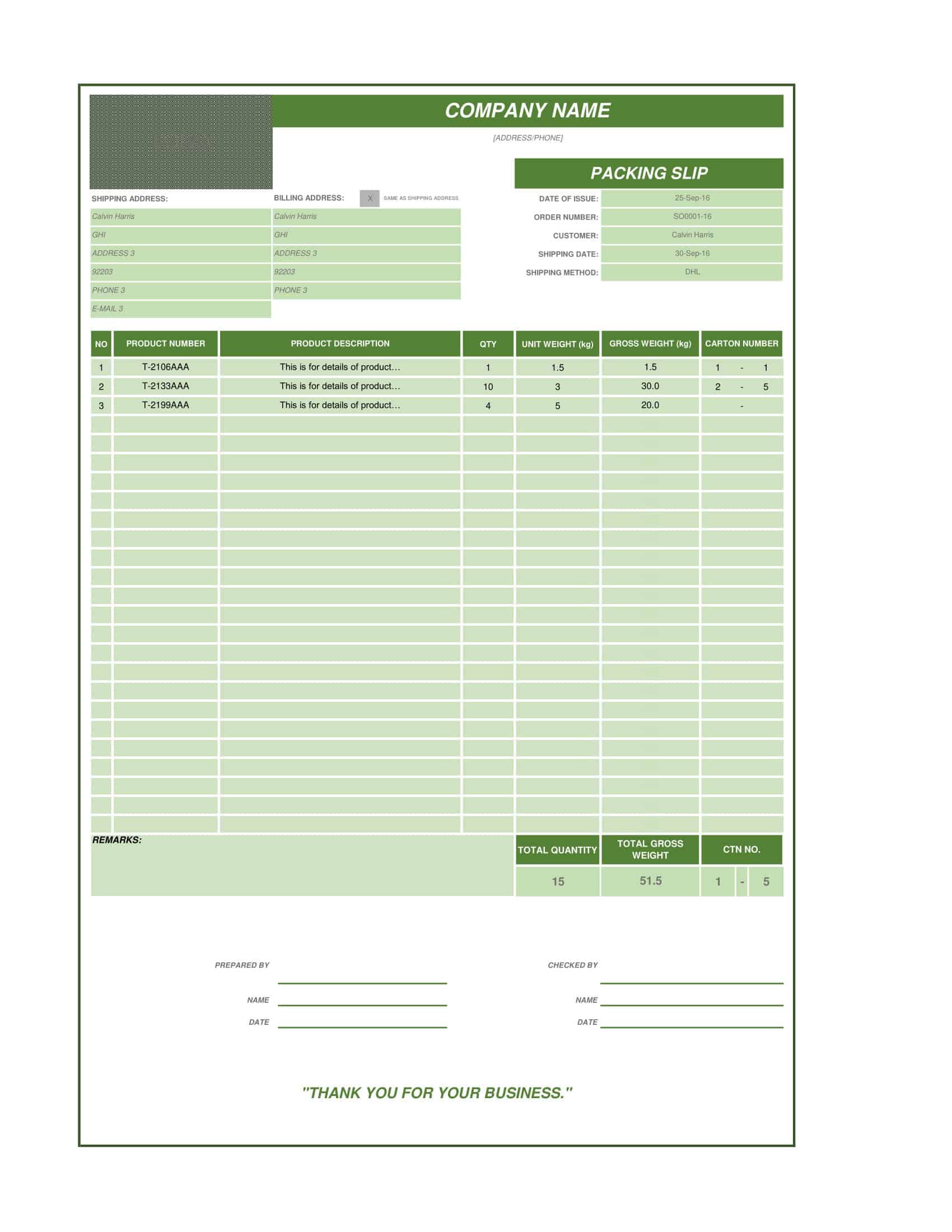

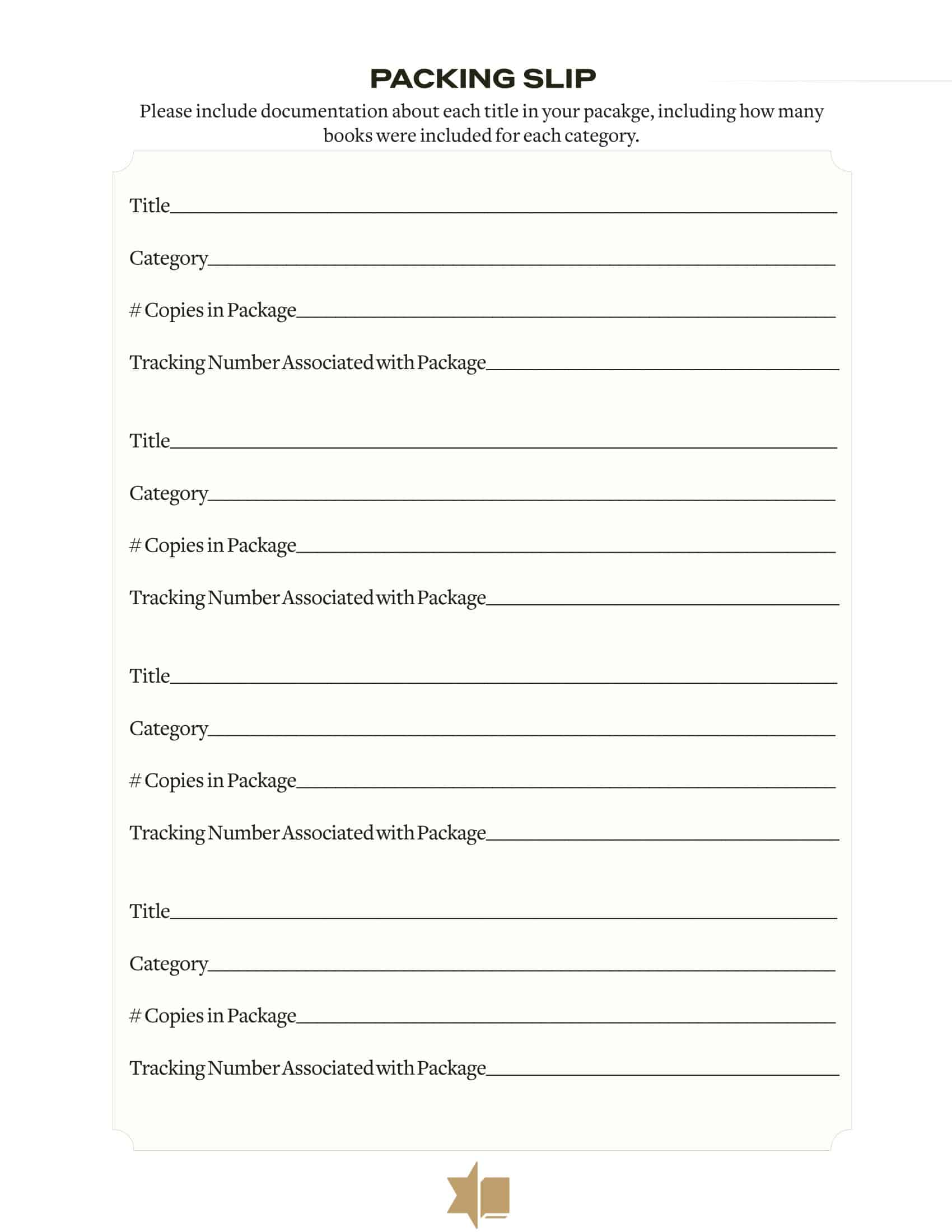







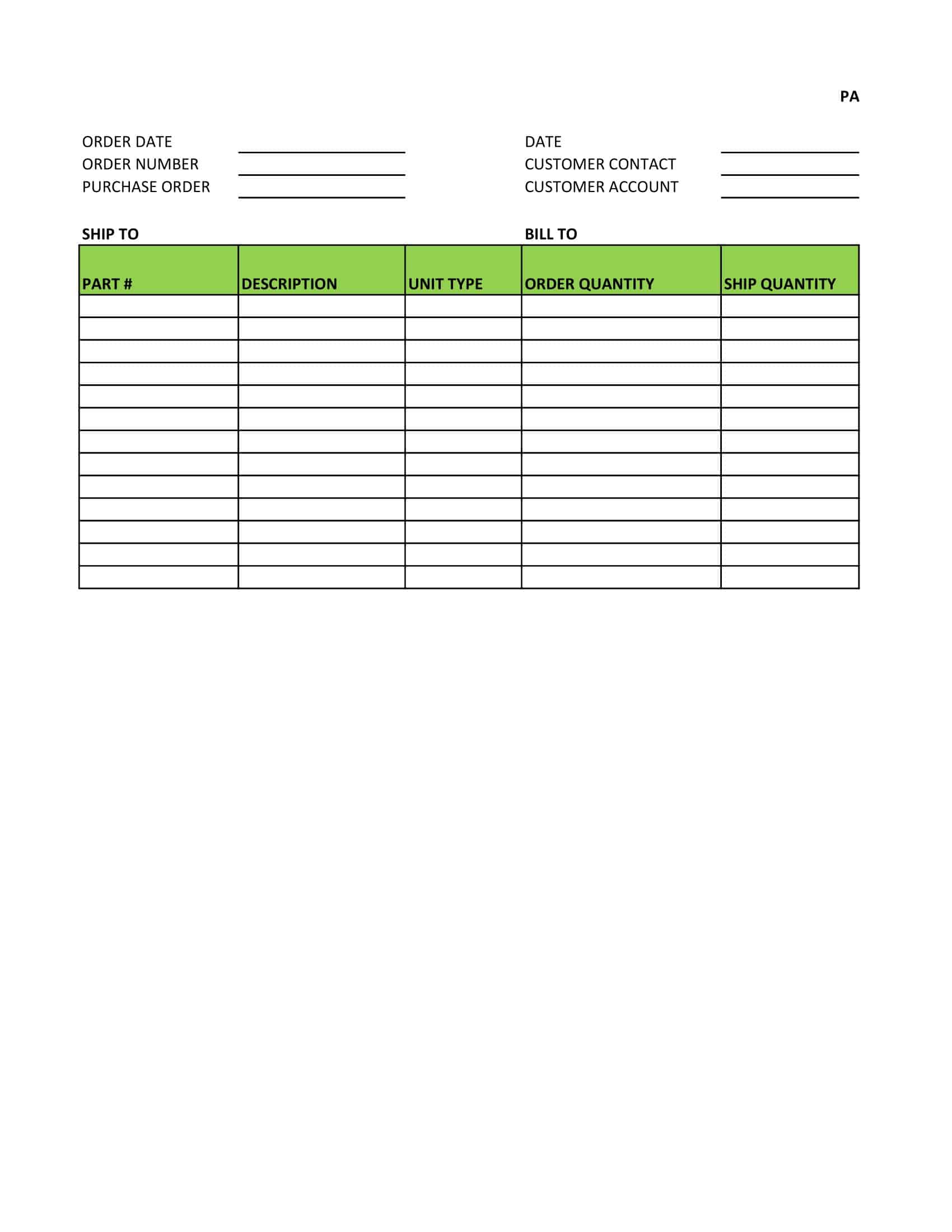




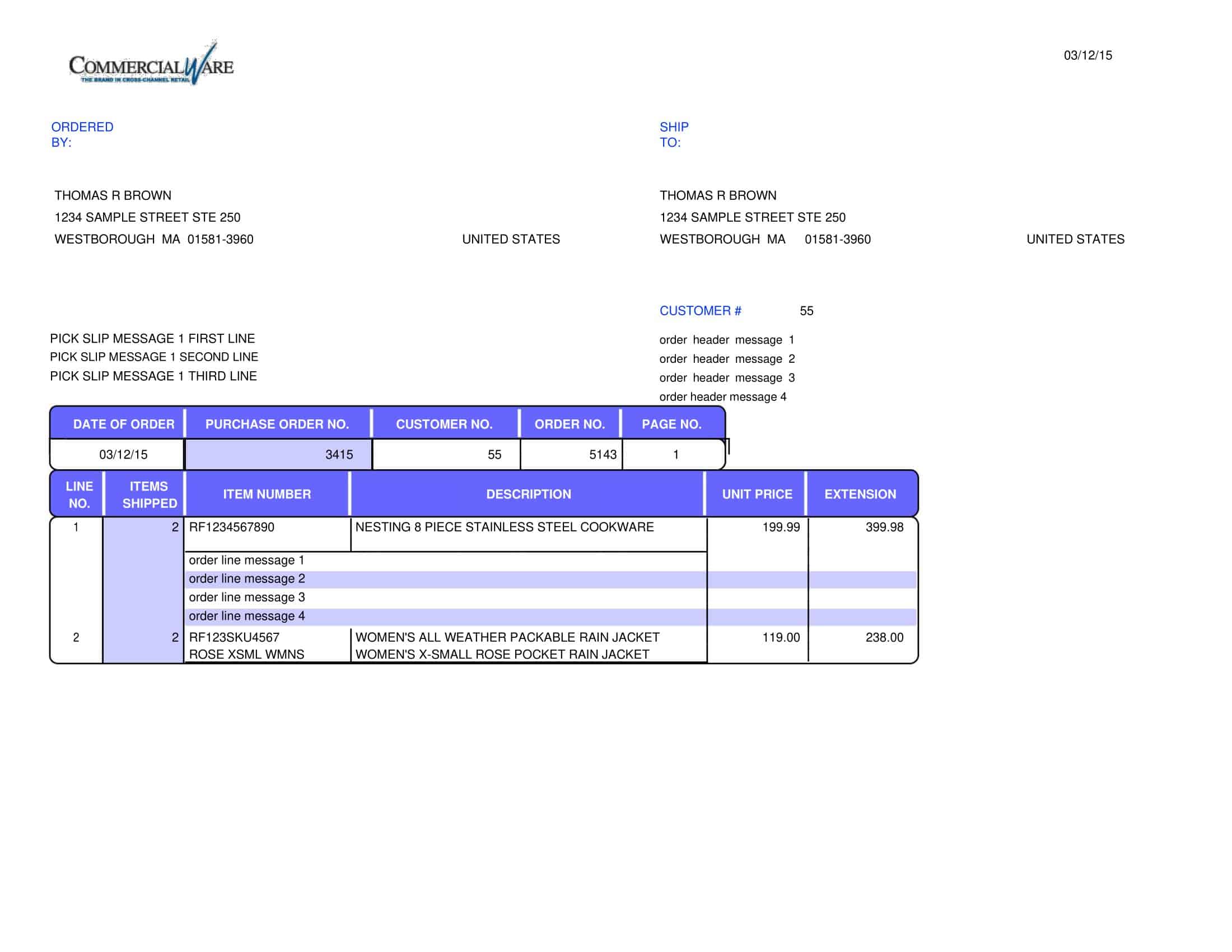

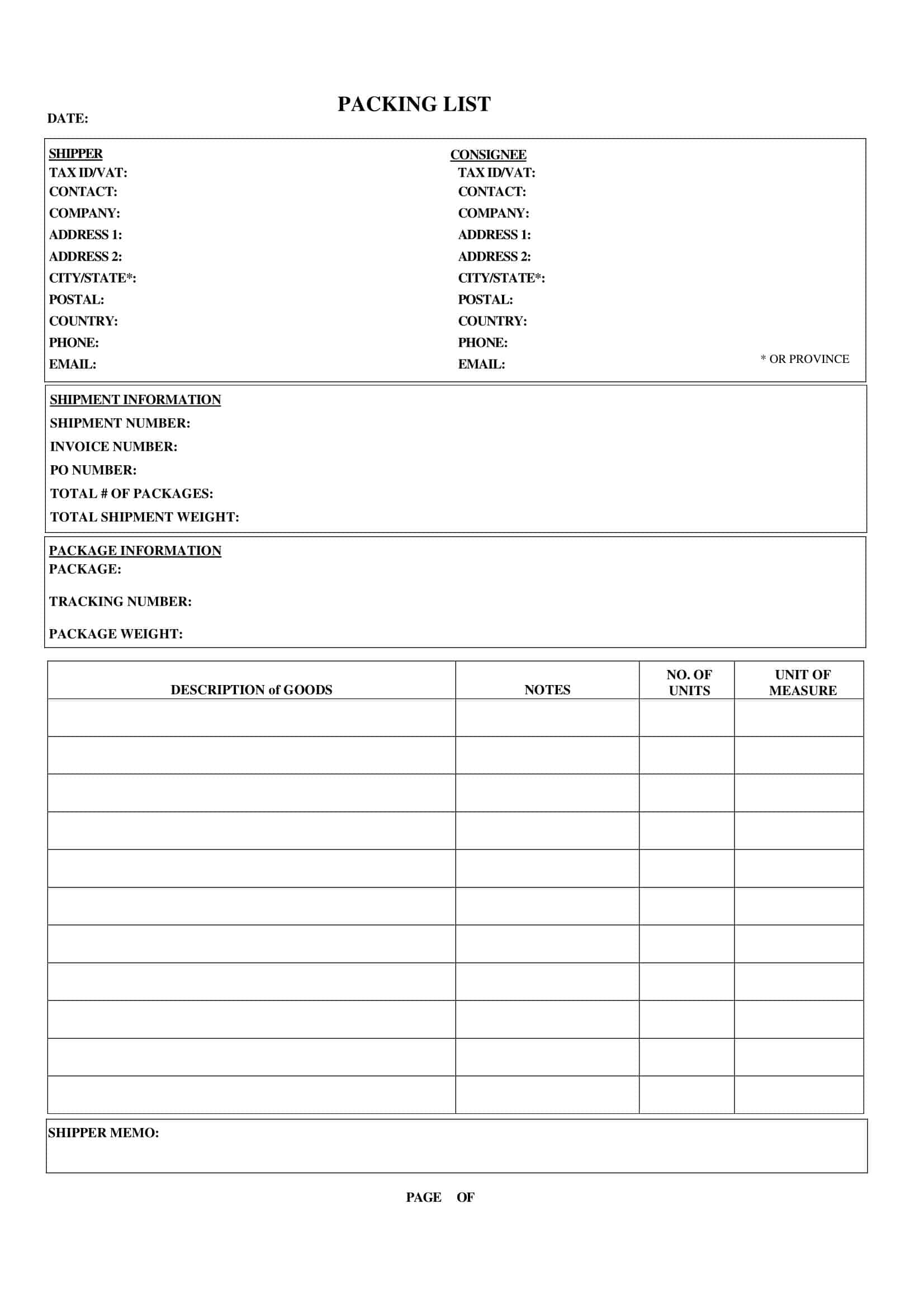

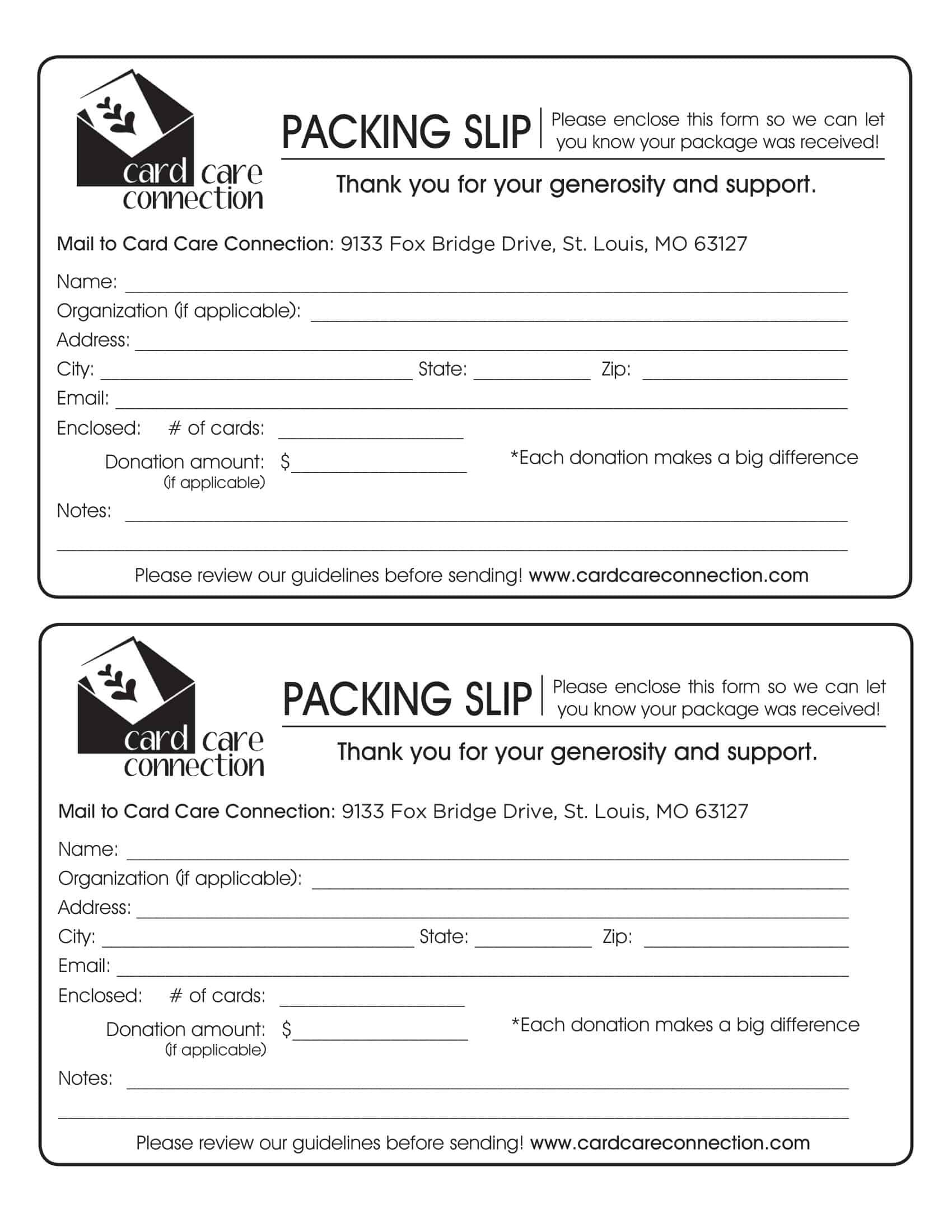












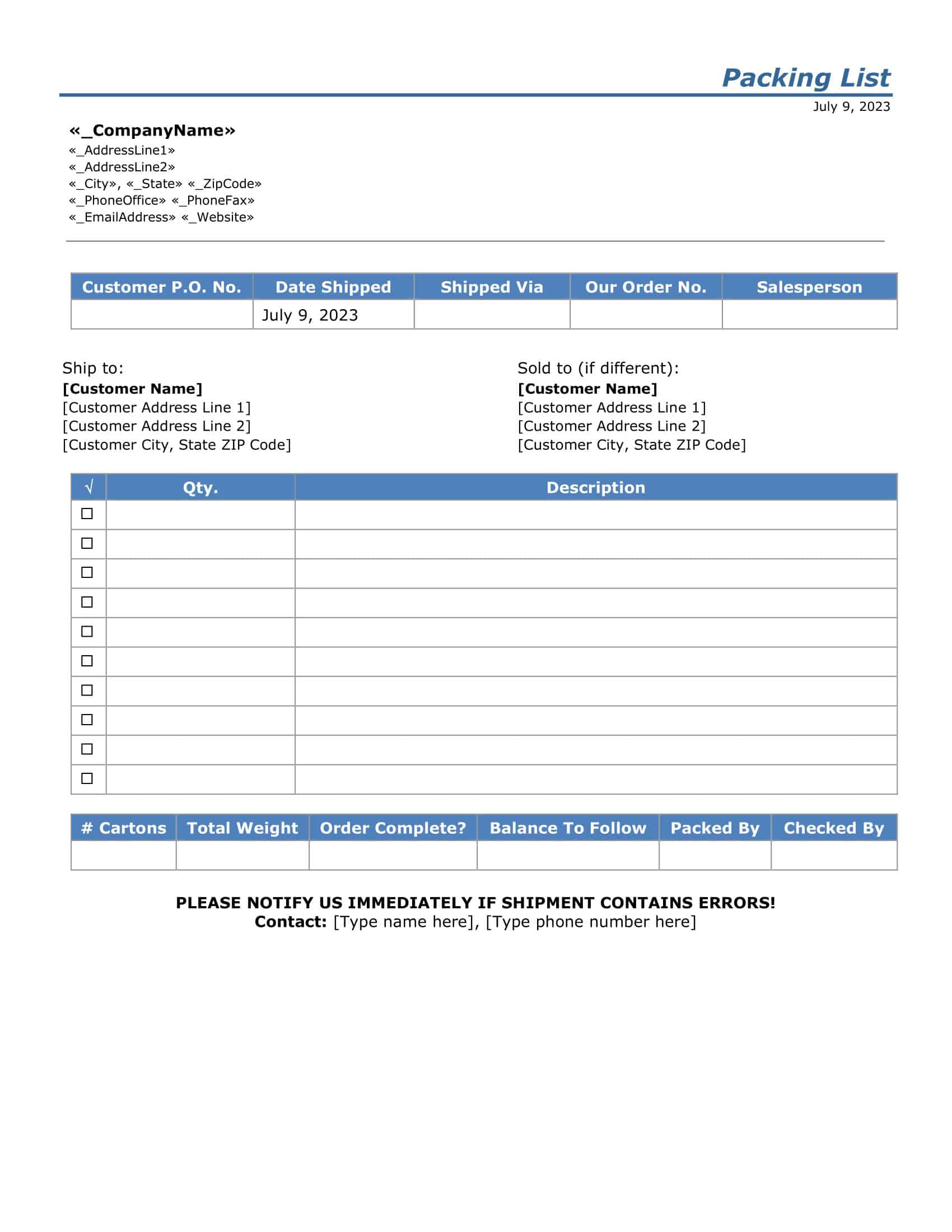



![Free Printable Credit Card Authorization Form Templates [PDF, Word, Excel] 1 Credit Card Authorization Form](https://www.typecalendar.com/wp-content/uploads/2023/06/Credit-Card-Authorization-Form-150x150.jpg)
![Free Printable Stock Ledger Templates [Excel,PDF, Word] 2 Stock Ledger](https://www.typecalendar.com/wp-content/uploads/2023/08/Stock-Ledger-150x150.jpg)
![Free Printable Financial Projections Templates [Excel, PDF] 3 Financial Projection](https://www.typecalendar.com/wp-content/uploads/2023/05/Financial-Projection-1-150x150.jpg)
